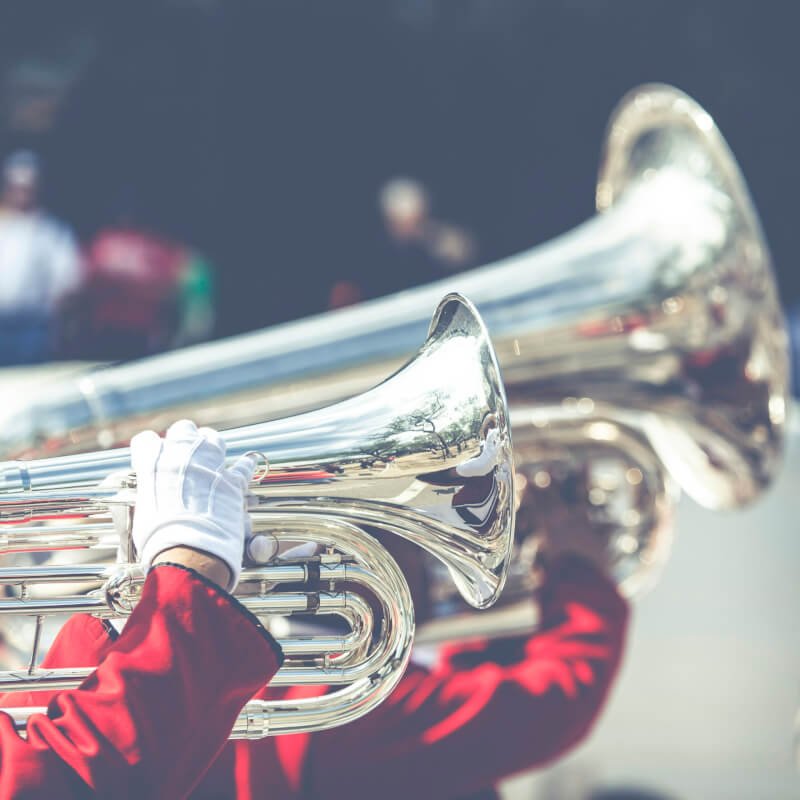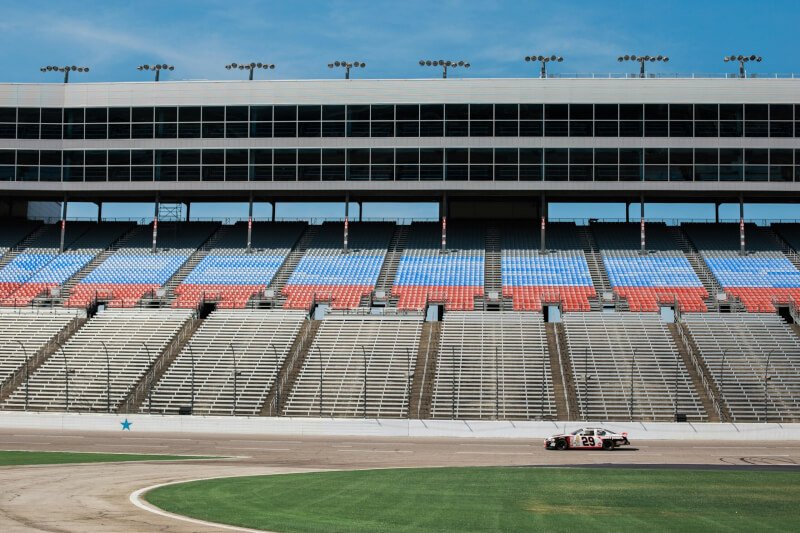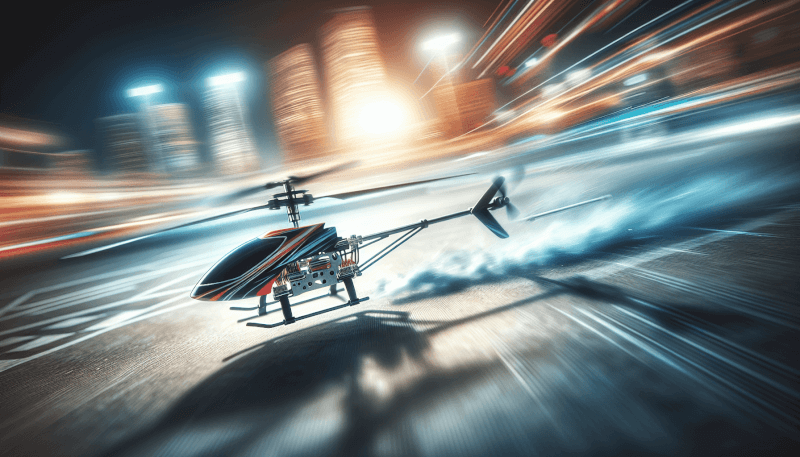If you’re a fan of RC helicopter racing and want to take your skills to the next level, then optimizing your helicopter’s performance is crucial. From improving speed and agility to increasing stability and control, there are a variety of steps you can take to enhance your racing experience. In this article, we’ll explore some effective techniques and tips for optimizing your RC helicopter’s performance, ensuring you have the competitive edge you need on the race track. Whether you’re a beginner or a seasoned racer, these strategies will help you maximize the speed and agility of your helicopter, leading to a more thrilling and successful racing experience.

1. Choosing the Right RC Helicopter for Racing
When it comes to racing RC helicopters, choosing the right model is a crucial first step. There are various factors to consider when selecting a helicopter for racing. Here are a few key points to keep in mind:
1.1 Consider the Type of RC Helicopter
There are different types of RC helicopters available in the market, including coaxial, fixed-pitch, and collective-pitch helicopters. For racing purposes, it is generally recommended to opt for a collective-pitch helicopter. These helicopters are known for their agility, speed, and maneuverability, making them ideal for racing.
1.2 Look for High-Speed Models
Since racing is all about speed, it is important to choose a helicopter that can reach high speeds. Look for models that are specifically designed for racing and have a reputation for speed. These high-speed helicopters are equipped with powerful motors, efficient propellers, and aerodynamic designs to help them achieve maximum velocity.
1.3 Check for Aerodynamic Design
Aerodynamics plays a crucial role in the performance of an RC helicopter. Look for models with sleek and streamlined designs that minimize air resistance and drag. Helicopters with smooth, clean lines and carefully designed airflow patterns will have a significant advantage when it comes to speed and maneuverability.
1.4 Consider the Size and Weight of the RC Helicopter
The size and weight of an RC helicopter can have a significant impact on its racing performance. Generally, smaller and lighter helicopters tend to be more agile and maneuverable. However, it’s important to strike the right balance between size and stability. Aim for a helicopter that is lightweight and compact while still maintaining sufficient stability during high-speed races.
2. Upgrading the Power System
To optimize your RC helicopter’s performance for racing, upgrading the power system is often necessary. Here are some key areas to focus on:
2.1 Upgrade the Motor
One of the first upgrades you should consider is the motor. Look for high-performance motors that provide more power and higher RPM (rotations per minute) for increased speed. A powerful motor will allow your helicopter to accelerate quickly, maintain high speeds, and perform aggressive maneuvers during races.
2.2 Opt for High-Quality LiPo Batteries
The battery is another crucial component that affects the performance of your RC helicopter. LiPo (Lithium Polymer) batteries are known for their high energy density and discharge rates, making them an excellent choice for racing. Invest in high-quality LiPo batteries with high C ratings to ensure a consistent and reliable power supply throughout the race.
2.3 Consider Electronic Speed Controllers (ESCs)
Electronic Speed Controllers (ESCs) play a significant role in controlling the speed and responsiveness of your helicopter. Upgrading to a high-performance ESC can provide smoother and more precise throttle control, resulting in improved acceleration and maneuverability. Look for ESCs that offer programmable features, such as adjustable timing and braking settings, to fine-tune your helicopter’s performance.
3. Enhancing the Aerodynamics
Adjusting the aerodynamics of your RC helicopter can significantly improve its racing performance. Here are some techniques to enhance the aerodynamics of your helicopter:
3.1 Trim the Propellers
Trimming the propellers involves adjusting their length and pitch to optimize performance. Shorter and stiffer propellers with a high pitch can generate more thrust, contributing to faster speeds. Experiment with different propeller sizes and pitches to find the optimal configuration for your helicopter.
3.2 Balance the Blades
Balancing the blades of your helicopter is crucial for reducing vibration and ensuring smooth operation. An unbalanced blade can cause instability and affect overall performance. Use specialized balancing tools to determine which blades need adjustment and add small weights if necessary to achieve optimal balance.
3.3 Modify the Fuselage Design
The fuselage design can also impact the aerodynamics of your helicopter. Consider making modifications such as adding streamlined canopy designs or reducing unnecessary protrusions to minimize drag. Additionally, ensure that all components within the fuselage are well-secured to minimize vibration and maintain aerodynamic efficiency.
4. Improving Control and Stability
Having precise control and stability over your RC helicopter is essential for racing. Here are some steps you can take to enhance control and stability:
4.1 Upgrading the Transmitter
Investing in a high-quality transmitter can significantly improve the control and responsiveness of your RC helicopter. Look for transmitters with features like low latency, ergonomic design, and programmable functions. A reliable transmitter will allow for intuitive control and quick reaction times during races.
4.2 Adjust the Servo Settings
Servos are responsible for controlling the movement of various parts of the helicopter, such as the swashplate and tail rotor. Adjusting the servo settings can fine-tune the responsiveness and precision of your helicopter’s controls. Experiment with different servo settings to achieve the desired level of control and stability.
4.3 Optimize Gyroscopic Stability
Gyroscopic stability plays a crucial role in maintaining control and stability during high-speed races. Gyro systems help counteract any unwanted movements and stabilize the helicopter in flight. Consider upgrading to advanced gyro systems that offer features like dual-axis or three-axis stabilization for improved control and stability.

5. Fine-tuning the Suspension System
The suspension system of your RC helicopter affects its stability and maneuverability. Here are some ways to fine-tune the suspension system:
5.1 Adjusting the Dampers
Dampers, also known as shocks, control the movement and damping of the helicopter’s suspension. Adjusting the damper settings can improve the helicopter’s response to jumps, bumps, and changes in terrain. Experiment with different damping settings to find the right balance between stability and agility.
5.2 Setting the Ride Height
The ride height refers to the distance between the bottom of the helicopter’s chassis and the ground. A proper ride height is essential for maintaining stability and preventing bottoming out during races. Adjust the ride height according to the type of track and racing conditions to optimize performance.
5.3 Upgrading the Landing Gear
Consider upgrading the landing gear to enhance stability and shock absorption. A high-quality landing gear system can minimize vibrations and ensure smooth landings, especially during high-speed races. Look for landing gear that is lightweight, durable, and designed specifically for racing conditions.
6. Optimizing the RC Helicopter’s Weight
Achieving the optimal weight for your RC helicopter is crucial for racing performance. Here are some techniques to optimize the weight:
6.1 Remove Unnecessary Parts
Carefully evaluate your helicopter to identify any unnecessary parts that can be removed without affecting performance or safety. For instance, remove excess wiring or unnecessary decorative components to streamline the weight of your helicopter.
6.2 Use Lightweight Materials
Where possible, replace heavier components with lightweight alternatives. Utilize carbon fiber or other lightweight materials for parts like frames, rotor blades, and tail fins. However, ensure that the chosen materials maintain sufficient strength and durability for racing conditions.
6.3 Balance the Weight Distribution
Balancing the weight distribution of your helicopter is vital for stability and maneuverability. Distribute the weight evenly across the helicopter by positioning components strategically. Proper weight distribution ensures optimal handling and responsiveness during races.

7. Choosing the Right Props
The choice of propellers can greatly impact the performance of your RC helicopter. Here’s what to consider when selecting props for racing:
7.1 Consider Propeller Sizes
Different propeller sizes can affect the thrust, speed, and maneuverability of your helicopter. Smaller propellers tend to generate higher RPM, resulting in increased speed. However, larger propellers may provide more stability and lifting power. Experiment with various propeller sizes according to your desired racing style and track conditions.
7.2 Evaluate the Pitch and Blade Shape
The pitch and blade shape of propellers also play a significant role in the performance of your helicopter. Higher pitch propellers generate more thrust and speed, while lower pitch propellers provide better stability. Evaluate different pitch and blade shape combinations to find the optimal balance between speed and stability for your racing needs.
7.3 Test and Experiment with Different Props
The best propeller for racing may vary depending on factors such as the type of track, weather conditions, and the specific characteristics of your helicopter. Test and experiment with different propellers to find the ones that offer the optimal balance of speed, responsiveness, and stability for your racing style.
8. Implementing Advanced Flight Control Systems
Advanced flight control systems can revolutionize the performance of your RC helicopter for racing. Here are some key components to consider:
8.1 Install Flight Controllers
Flight controllers are advanced electronic devices that help stabilize and control your helicopter. They use sensors to detect unwanted movements and adjust the helicopter’s control surfaces to counteract them. Install flight controllers that offer advanced stabilization algorithms and adjustable settings to fine-tune your helicopter’s response during races.
8.2 Calibrate and Program the Flight Control Systems
Once you’ve installed flight controllers, it’s essential to calibrate and program them correctly. Calibrating the flight control systems ensures accurate readings from the sensors, while programming allows you to customize the helicopter’s behavior and response to your preferences. Take the time to understand the programming options and make adjustments accordingly.
8.3 Utilize GPS and Telemetry Systems
GPS and telemetry systems provide real-time information about your helicopter’s position, speed, altitude, and other important parameters. By utilizing these systems, you gain valuable insights into your helicopter’s performance and can make informed decisions to optimize racing strategies. Consider investing in GPS and telemetry systems that are compatible with your helicopter and provide the necessary data for analysis and improvement.

9. Regular Maintenance and Cleaning
Regular maintenance and cleaning are essential to keep your RC helicopter in optimal condition for racing. Here’s what to consider:
9.1 Clean the RC Helicopter After Each Race
After each race, make it a habit to clean your helicopter thoroughly. Remove any dirt, debris, or residue that may have accumulated during the race. Pay particular attention to the rotor blades, motor, and other sensitive components. Cleaning ensures that your helicopter continues to perform at its best and helps prolong its lifespan.
9.2 Check for Loose Parts and Connections
Periodically inspect your RC helicopter for loose parts or connections. Vibrations and high-speed races can cause parts to become loose over time. Tighten any screws, bolts, or connectors that may have come loose to ensure a secure and reliable helicopter during races.
9.3 Lubricate Moving Parts Periodically
Lubricating the moving parts of your helicopter is essential to reduce friction and maintain smooth operation. Apply a suitable lubricant to parts such as the rotor bearings, swashplate, and tail rotor assembly. Regular lubrication helps prevent excessive wear and tear, ensuring optimal performance during races.
10. Practicing and Fine-tuning Your Flying Skills
Ultimately, the key to optimizing your RC helicopter’s performance for racing lies in practicing and refining your flying skills. Here are some ways to improve:
10.1 Join Racing Clubs and Communities
Joining racing clubs and communities not only provides opportunities to participate in competitive events but also allows you to learn from experienced racers. Interacting with other enthusiasts can help you gather valuable tips, tricks, and insights to enhance your racing skills.
10.2 Practice Different Racing Maneuvers
Dedicate time to practice various racing maneuvers, such as sharp turns, quick accelerations, and precision landings. By honing your skills in these specific areas, you can improve your overall racing performance and increase your chances of success.
10.3 Collaborate with Experienced Racers for Tips and Tricks
Collaborating with experienced racers can offer invaluable guidance in improving your flying skills. Seek out opportunities to fly alongside seasoned pilots and ask for their feedback. They can provide specific tips and tricks based on their own experiences, helping you fine-tune your racing technique and elevate your performance.
By following these comprehensive steps, you can optimize your RC helicopter’s performance for racing and take your skills to new heights. Remember to enjoy the process, embrace the challenges, and always prioritize safety while pushing the boundaries of speed and agility. Happy racing!



